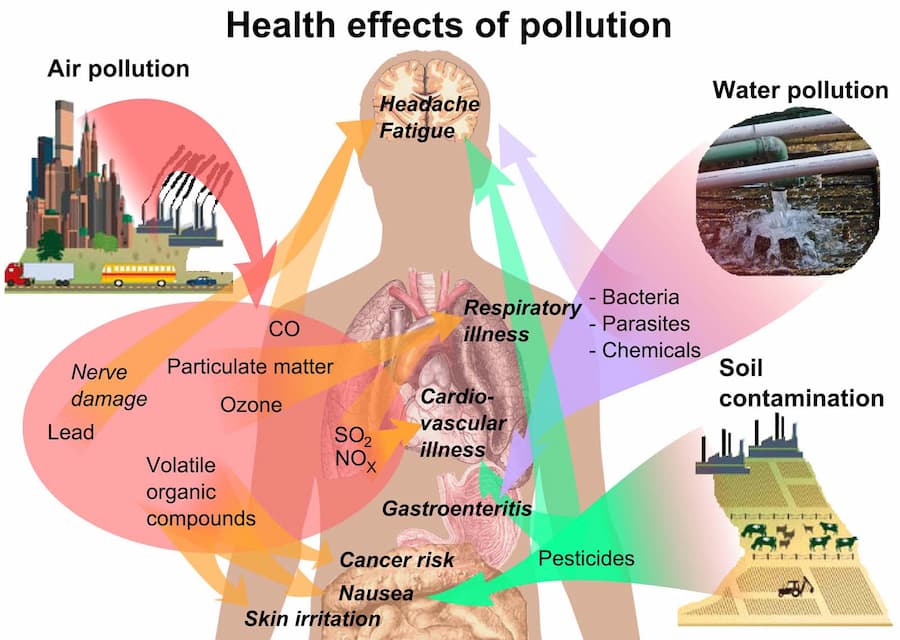New report identifies four ways to reduce health risks from climate pollutants

A new World Health Organization report
highlights the urgent need to reduce emissions of black carbon, ozone and
methane - as well as carbon dioxide – which all contribute to climate change.
Black carbon, ozone and methane – frequently described as short-lived climate
pollutants (SLCPs) - not only produce a strong global warming effect,
they contribute significantly to the more than 7 million premature deaths
annually linked to air pollution.
The report, “Reducing global health risks through mitigation of short-lived climate pollutants”, produced in collaboration with the Climate and Clean Air Coalition to Reduce Short-Lived Climate Pollutants, reveals that interventions to cut SLCPs can reduce disease and death and contribute to food security, improve diets and increase physical activity.
“Every day, these pollutants threaten the health of men, women and children,” says Dr Flavia Bustreo, Assistant Director-General at WHO. “For the first time, this report recommends actions that countries, health and environment ministries, and cities can take right now to reduce emissions, protect health and avoid illness and premature deaths, which often take the greatest toll on the most vulnerable.”

The report, “Reducing global health risks through mitigation of short-lived climate pollutants”, produced in collaboration with the Climate and Clean Air Coalition to Reduce Short-Lived Climate Pollutants, reveals that interventions to cut SLCPs can reduce disease and death and contribute to food security, improve diets and increase physical activity.
“Every day, these pollutants threaten the health of men, women and children,” says Dr Flavia Bustreo, Assistant Director-General at WHO. “For the first time, this report recommends actions that countries, health and environment ministries, and cities can take right now to reduce emissions, protect health and avoid illness and premature deaths, which often take the greatest toll on the most vulnerable.”

The report builds off a 2011 assessment by the UN Environment Programme and
World Meteorological Organization that estimated that a global deployment of 16
SLCP reduction measures would prevent an average of 2.4 million premature
deaths annually by 2030. New estimates could raise that to 3.5 million lives
saved annually by 2030, and between 3 to 5 million lives per year by 2050.
These latest projections take into account WHO’s latest data on deaths linked
to air pollution as well as some new SLCP measures.
"Quick action to reduce black carbon, methane and other ozone precursors are much needed now, " says Helena Molin Valdés, head of the UNEP-hosted CCAC. “We know that the sooner we start reducing these pollutants the sooner we will relieve the pressures on climate and human health.”
Top actions for health and climate benefits
"Quick action to reduce black carbon, methane and other ozone precursors are much needed now, " says Helena Molin Valdés, head of the UNEP-hosted CCAC. “We know that the sooner we start reducing these pollutants the sooner we will relieve the pressures on climate and human health.”
Top actions for health and climate benefits
 WHO rated more than 20 available and affordable measures to mitigate
short-lived climate pollutants, including vehicle emissions standards, capturing
landfill gas, switching from fossil fuels to renewables, reducing food waste
and improving household cooking fuels, to see which have the greatest potential
to improve health, reduce SLCP emissions and prevent climate change.
WHO rated more than 20 available and affordable measures to mitigate
short-lived climate pollutants, including vehicle emissions standards, capturing
landfill gas, switching from fossil fuels to renewables, reducing food waste
and improving household cooking fuels, to see which have the greatest potential
to improve health, reduce SLCP emissions and prevent climate change.Four interventions rated medium to high in all three categories:
·
Reducing vehicle
emissions by implementing higher emissions and efficiency standards could
reduce black carbon and other co-pollutants from fossil fuels, improve air
quality and reduce the disease burden attributable to outdoor air pollution.
- Policies and investments that prioritize dedicated rapid transit such as buses and trains and foster safe pedestrian and cycle networks can promote multiple benefits, including: safer active travel and reduced health risks from air and noise pollution, physical inactivity, and road traffic injuries.
- Providing cleaner and more efficient stove and fuel alternatives to the approximately 2.8 billion low-income households worldwide dependent on primarily wood, dung and other solid fuels for heating and cooking, could reduce air pollution-related diseases and reduce the health risks and time invested in fuel-gathering.
- Encouraging high and middle-income populations to increase their consumption of nutritious plant-based foods could reduce heart disease and some cancers, and slow methane emissions associated with some animal-sourced foods.
“The health benefits that may be
obtained from these strategies are far larger than previously understood, and
they can be enjoyed immediately and locally,” says Maria Neira, WHO Director,
Department of Public Health, Environmental and Social Determinants of
Health. “The environment and health sectors can now prioritize interventions
to meet both of their goals—preventing climate change and ensuring good
health.”
The way forward
The way forward

The release of today’s report is a significant step in WHO’s ongoing work to
prevent diseases and deaths related to air pollution – and towards achieving
the new global health goal. Target 3.9 aims to “By 2030, substantially reduce
the number of deaths and illnesses from hazardous chemicals and air, water and
soil pollution and contamination.”
In May 2015, the World Health Assembly adopted a resolution to address the health impacts of air pollution, which stresses the need for strong cooperation between different sectors and integration of health concerns into national, regional and local air-pollution-related policies.
WHO is piloting a number of these approaches in the urban health initiative it is leading with CCAC, Norway and other partners. The initiative will be rolled out in 4 cities in 2016. As part of this initiative, cost benefit analysis of key interventions recommended here will be further assessed.
Evidence from previous WHO studies on healthy transport already suggest that shifts to mass transport and the introduction of safe walking and cycling networks are relatively inexpensive when compared with the loss of life and costs of treating people for air-pollution related illnesses, traffic injuries and diseases related to physical inactivity.
The scoping review provides indicative ratings on three criteria:
In May 2015, the World Health Assembly adopted a resolution to address the health impacts of air pollution, which stresses the need for strong cooperation between different sectors and integration of health concerns into national, regional and local air-pollution-related policies.
WHO is piloting a number of these approaches in the urban health initiative it is leading with CCAC, Norway and other partners. The initiative will be rolled out in 4 cities in 2016. As part of this initiative, cost benefit analysis of key interventions recommended here will be further assessed.
Evidence from previous WHO studies on healthy transport already suggest that shifts to mass transport and the introduction of safe walking and cycling networks are relatively inexpensive when compared with the loss of life and costs of treating people for air-pollution related illnesses, traffic injuries and diseases related to physical inactivity.
The scoping review provides indicative ratings on three criteria:
- A high certainty of producing a major SLCP-related climate benefit, meaning the intervention must address an activity that is a major source of SLCP emissions and there must be good evidence that reductions in those emissions have a cooling effect.
- A high likelihood of producing a major health benefit, meaning it must reduce population exposure to risk factors that are associated with substantial disease burdens. Examples of risk factors include: outdoor and indoor air pollution, low physical activity, road traffic injuries and risk factors associated with insufficient fruit and vegetable intake.
- Potential to reduce carbon dioxide and thus prevent climate change over the long term.
This report comes
ahead of the launch of WHO’s first climate change and health country profiles,
a number of which will be released in advance of the 2015 Paris Climate
Conference (COP21).
The Climate and Clean Air Coalition is a voluntary global partnership of governments, intergovernmental organizations, businesses, scientific institutions and civil society committed to catalysing concrete, substantial action to reduce Short Lived Climate Pollutants (including methane, black carbon and many hydrofluorocarbons). The Coalition works through collaborative initiatives to raise awareness, mobilize resources and lead transformative actions in key emitting sectors.
The Climate and Clean Air Coalition is a voluntary global partnership of governments, intergovernmental organizations, businesses, scientific institutions and civil society committed to catalysing concrete, substantial action to reduce Short Lived Climate Pollutants (including methane, black carbon and many hydrofluorocarbons). The Coalition works through collaborative initiatives to raise awareness, mobilize resources and lead transformative actions in key emitting sectors.
Comments
Post a Comment